Class 11 – Time and State
Class 12 – Debugging
Additional Resources
Interactive Media Arts – NYU Shanghai
Class 11 – Time and State
Class 12 – Debugging
Class 7 – Actuators
/* (!) Disclaimers:
1. This recitation requires you to work with higher voltages. If the circuit is not built properly in accordance with the provided schematics, there is potential to damage your computer if you are not using USB protection. If you choose to use your computer for this recitation, please notice that you are doing so at your own risk. If you do not feel comfortable using your own computer, you can check out an IMA laptop from the Equipment Room.
2. To prevent your computer from accidental damage, therefore use the provided USB protector, which plugs in between your computer and the Arduino.
3. The components in this recitation (the IC and Stepper Motor) will get hot, so please be mindful and do not touch these components when they are powered. */
This week, we will be creating a mechanism out of cardboard. You will work together with a partner. You only need to build one mechanism and one circuit, so you should make sure that you help each other to complete all the steps.
You will be making the bipolar circuit for the example code Stepper > stepper_oneRevolution (the same code is also available online for you to copy). First, build the following circuit to control the stepper (click to enlarge).
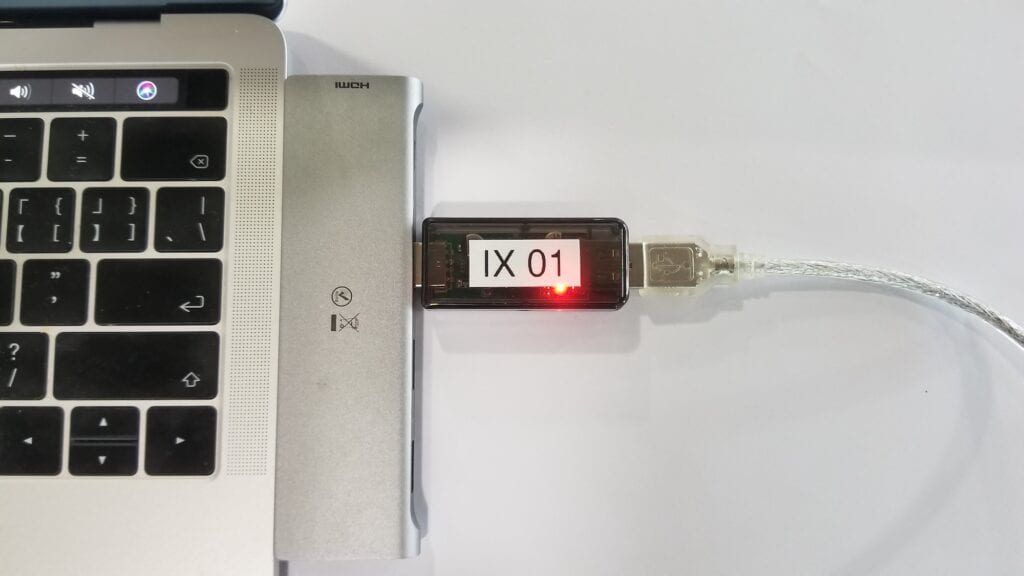 */
*/
/* 
Make sure you orient the IC in the correct position; The IC has a front and a back. A semicircle indicates where the front of the IC is. The pin to the left is pin 1, and the diagram beside depicts how the other pins are numbered.
*/
If your wiring is correct, and you have programmed your Arduino with the Stepper > stepper_oneRevolution example (also available online) sketch, your motor should rotate smoothly and make one revolution. Only if your motor rotates evenly, you should continue with Step 2.
| Qty | Equipment | Photo |
| 1 | Template | 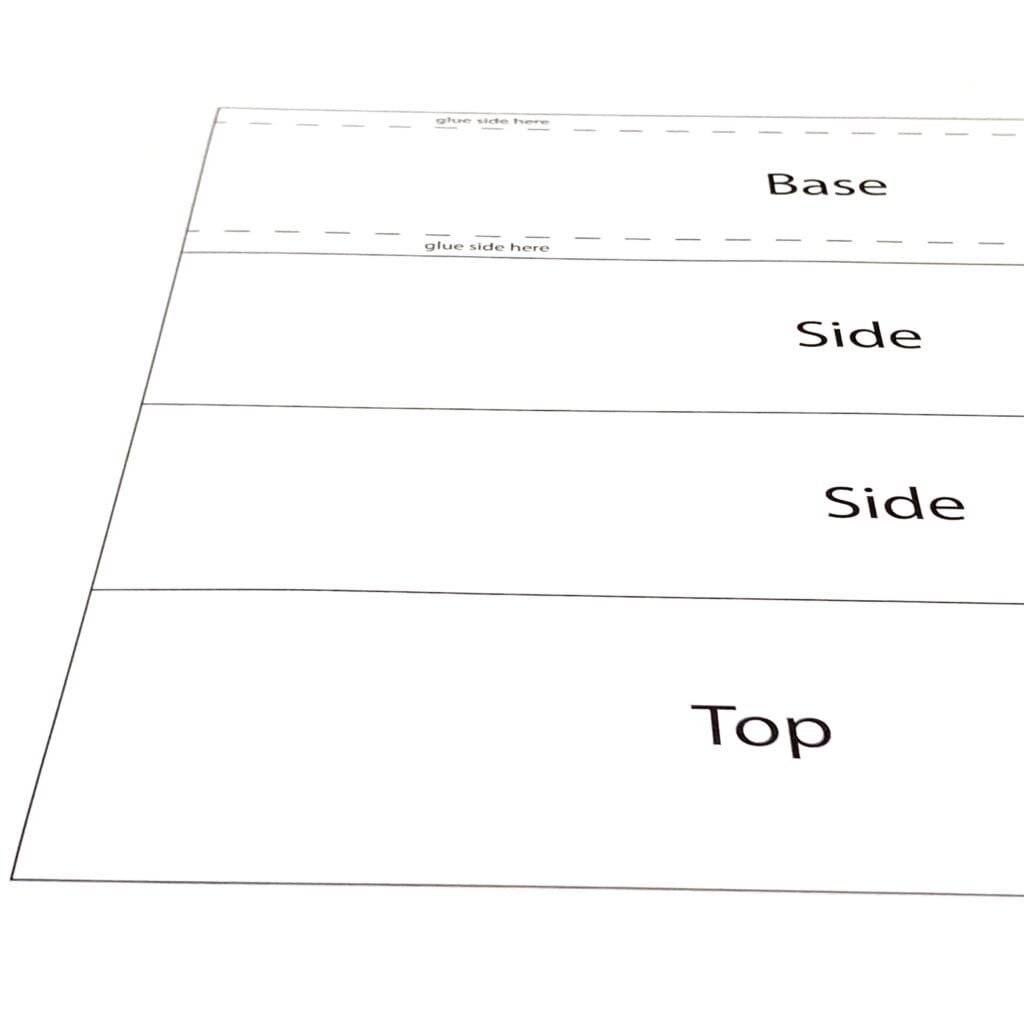 |
| 1 | Cardboard sheet | |
| 1 | Shaft adaptor | 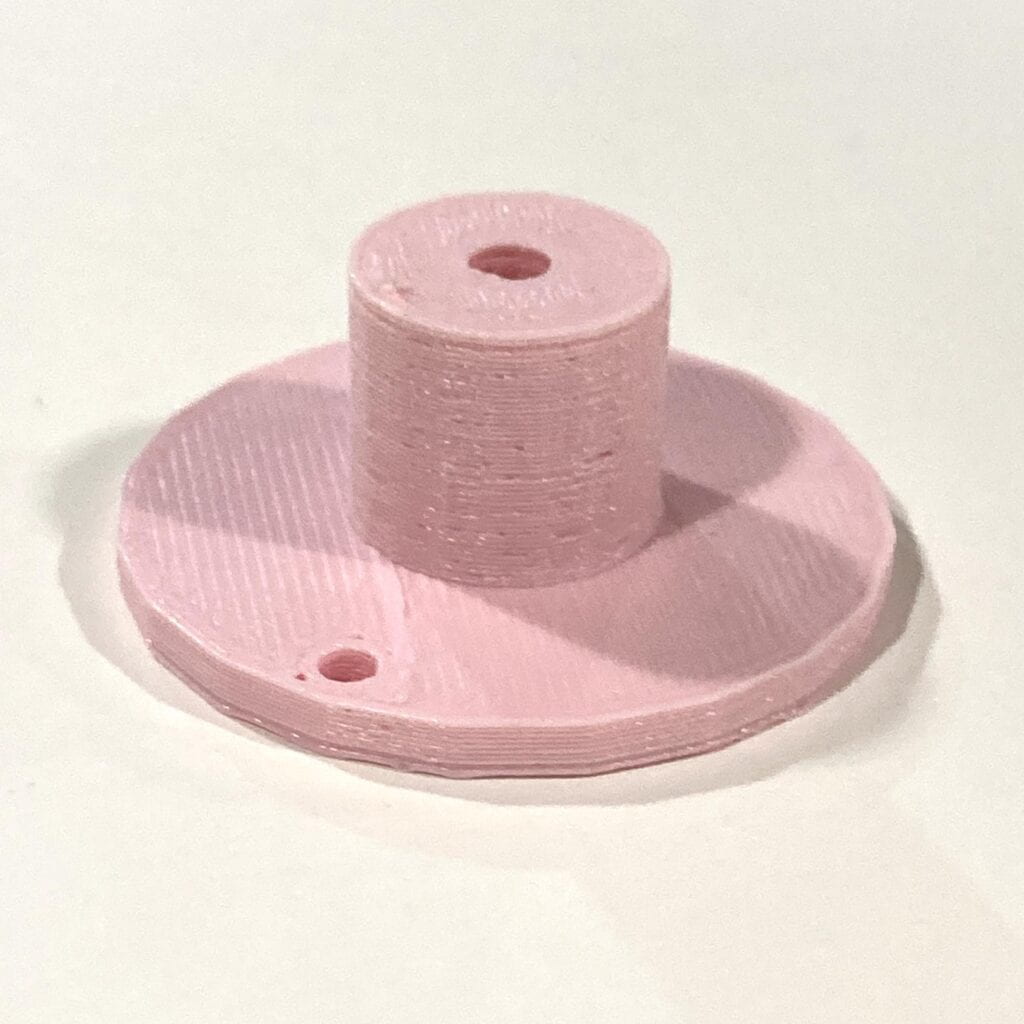 |
| 2 | Rivets | 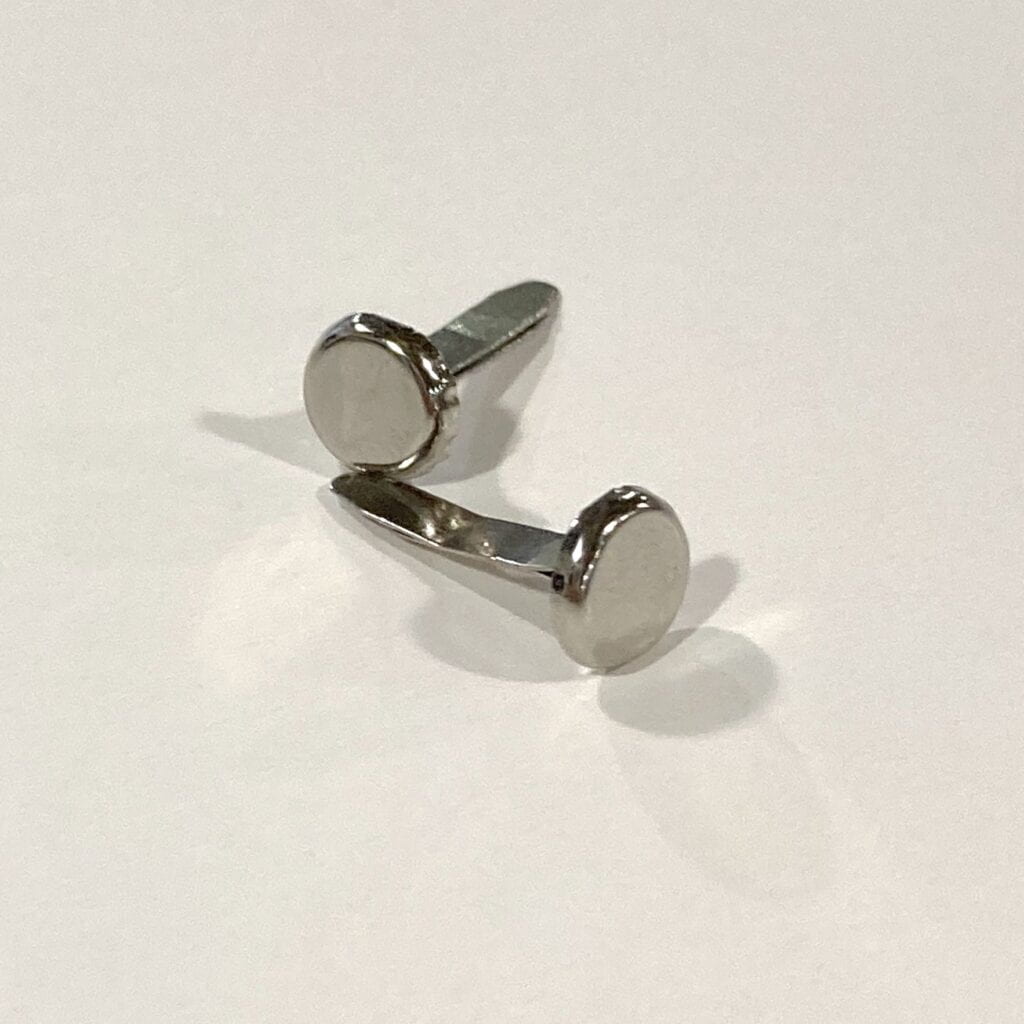 |
| 1 | Hot glue gun + glue sticks | (included in your toolkit) |
| 1 | Box cutter (or utility knife) |
Once you and your partner have finished Step 1, pick up one template and a sheet cardboard for your mechanism building activity. Since the stepper motor will be embedded in your cardboard mechanism, unplug it from your breadboard while you build (and reconnect it later to test).
Start by attaching the template onto the textured (“bad”) side of the cardboard using the glue stick. Now you can can cut out the different parts using the ruler and the box cutter in your toolkit. A few parts require you to punch a small hole through the cardboard through which rivets will go, connecting two pieces of cardboard. The pointy tip of your soldering iron makes a good hole.
/* Important note:
1. If you are unfamiliar with a tool, ask how to use it to any instructor, fellow researcher, or learning assistant.
2. You will need to use a cutting mat under the surface you cut. Do not damage the tables of our studio!
3. Place a paper or cardboard under your hot glue gun. Pay special attention because it might damage belongings (and fingers!). */
Next, glue together the different cardboard pieces using the hot glue gun. (Feel free to remove the paper template at this point, if you like, once you know where the part will go.)
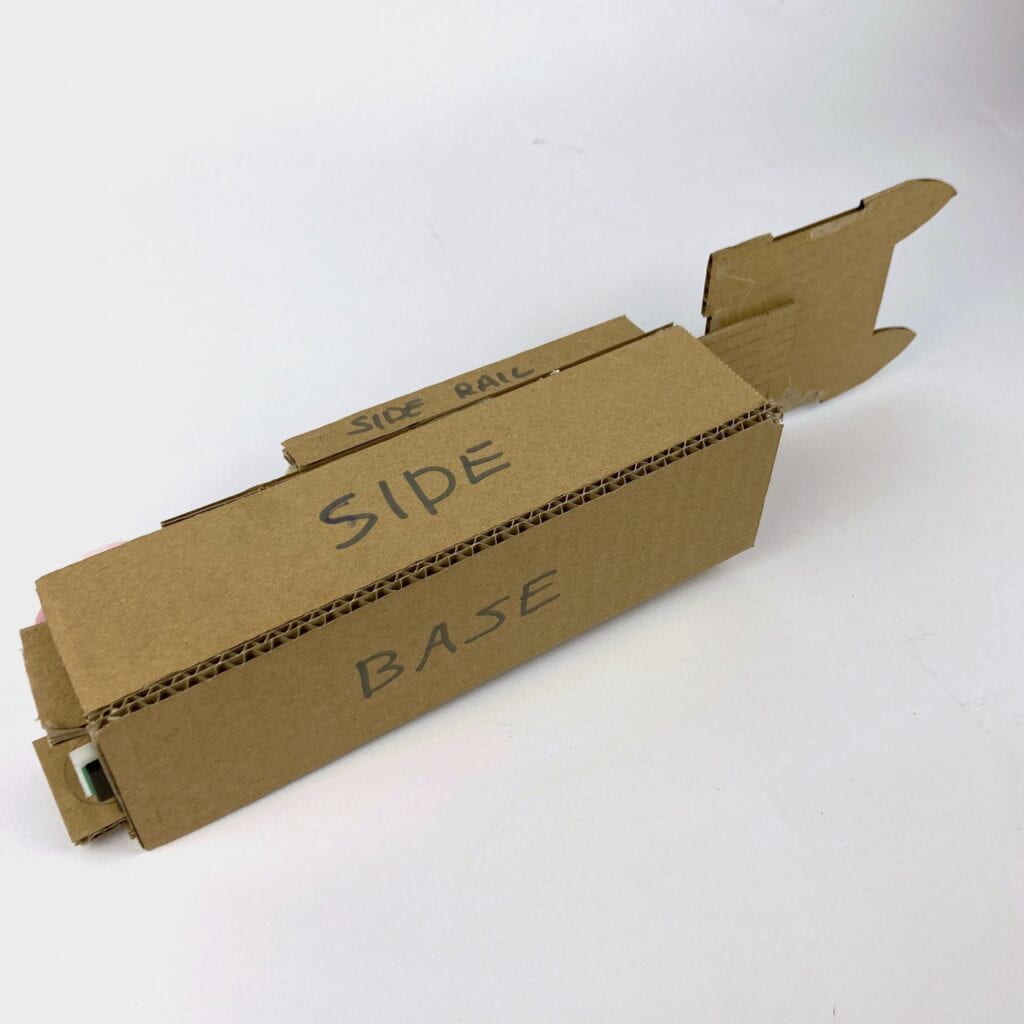 |
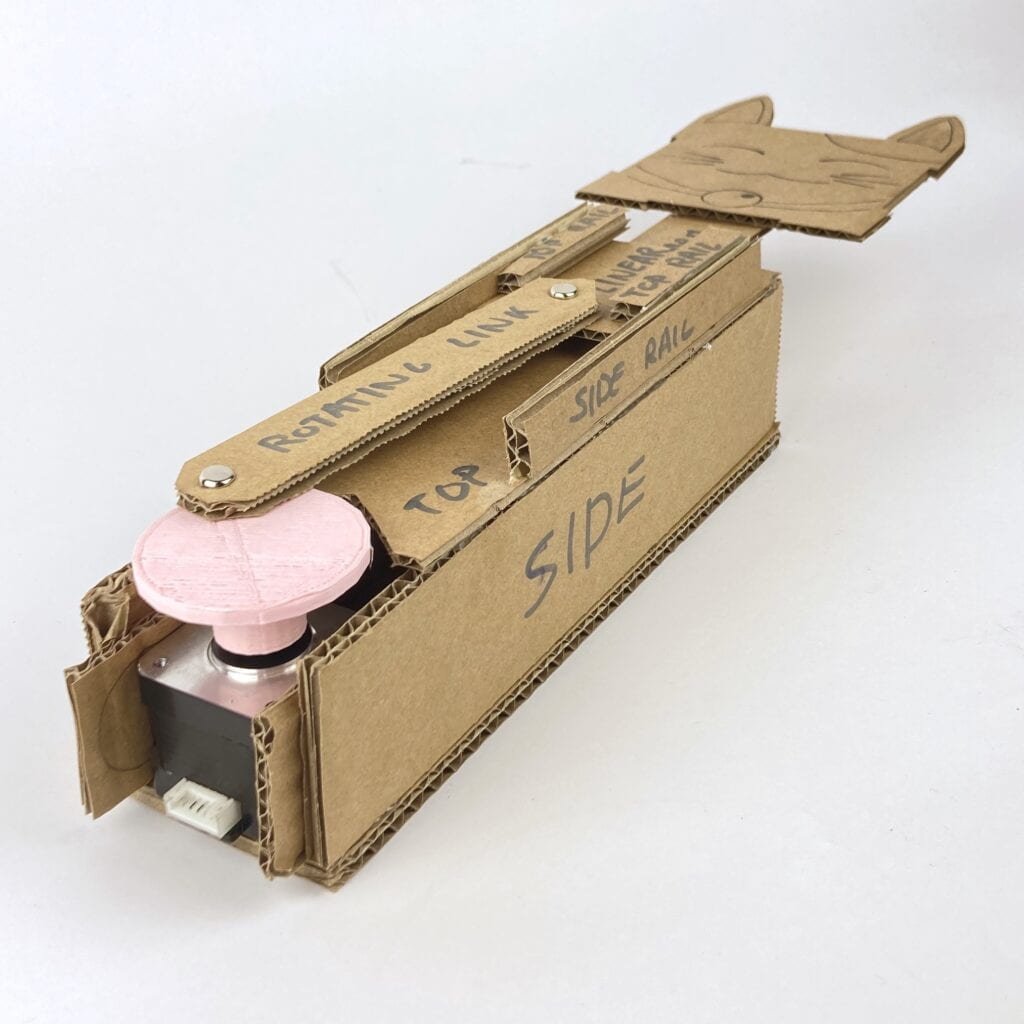 |
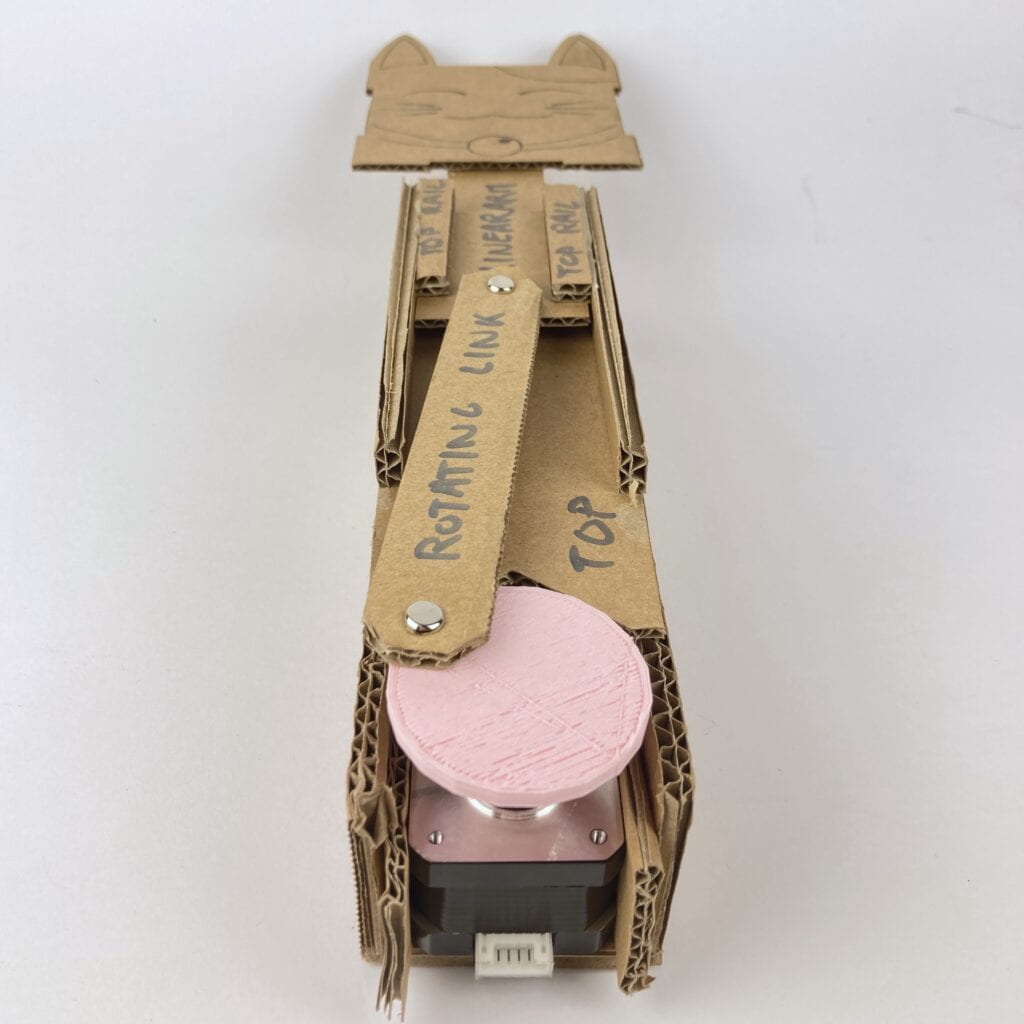 |
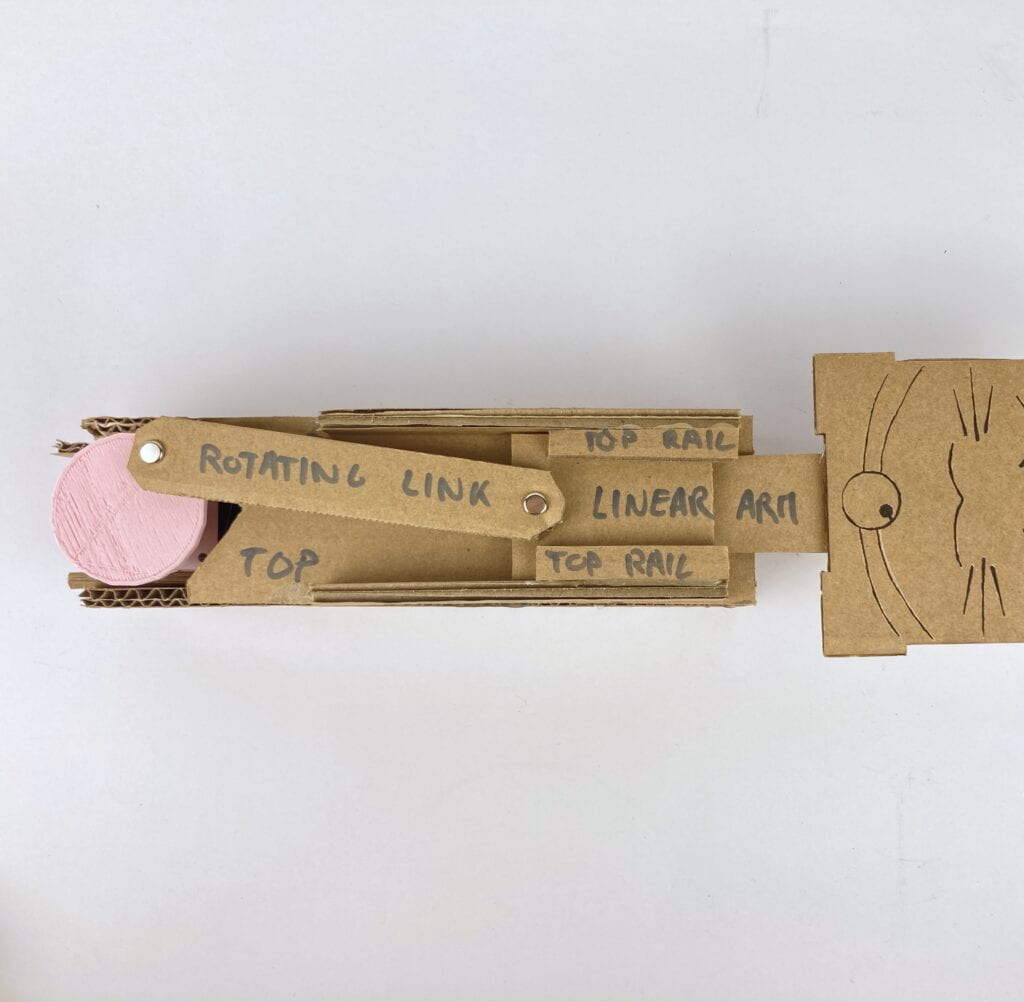 |
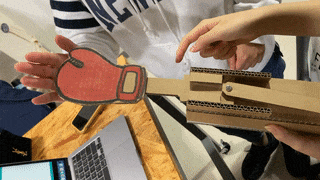
Together with your partner, modify your mechanism to tell a tiny story. What could it represent? A boxing glove that punches? A piston in an engine that moves? Consider adding appendages to your mechanisms – add paper or cardboard – use it sideways – etc.
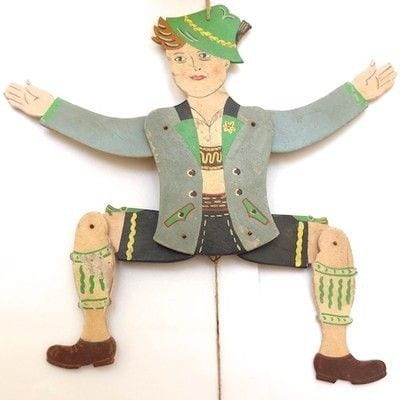
Modify the code so that the movement is coherent with your chosen narrative. E.g. the arm of a boxer will move forward much more quickly, before stopping, and pulling back. Use delay(), myStepper.setSpeed(), myStepper.step() , and random() to this end.
Don’t forget to continue using the USB protector as you’re working on this! Document the motion you came up with in a video.
Make sure you document the process and the result of your circuit and mechanism building. Additionally, answer the following questions your answers:
Additional Questions
Question 1: Choose an art installation mentioned in the reading ART + Science NOW, Stephen Wilson (Kinetics chapter). Post your thoughts about it and make a comparison with the work you did during this recitation. How do you think that the artist selected those specific actuators for his project?
Question 2: What kind of mechanism would you be interested in building for your midterm project? Explain your idea using a sketch (conceptual or technical) with a list of materials that you plan to use. Include details about the ways that you expect the user to embrace in a physical interaction with your project. In particular, explain how would your motor (or motors) with a mechanism will be different than using an animation on a digital screen.
/* * * * * * * * * * * * * * * * * * * * * * * * Welcome to the 1st Interaction Lab recitation! Here are a few things to help you get started: 1. At the beginning of each recitation, please carefully read through all the instructions, material list, and references (if any). 2. While you are reading, you will be called upon to take attendance(with your campus card) and collect materials for the tasks. 3. It is very important to document your work properly. For each task, you should take pictures and/or videos of the finished circuit working, as well as the important steps of the building process, such as problems you encountered, and how you fixed them. Take notes on questions you had and lessons you learned. 4. If you have any questions, eagerly seek help and ask questions from professors, fellows, or learning assistants. Documenting the questions you have and the help you get with them is useful in your written documentation. 5. Return all materials you have borrowed at the end of recitation. If you finish the tasks early, don’t leave unless you buy bubble tea for everyone. 6. If you aren't able to finish the tasks, you can come to the 826 studio during the opening hours to continue working. The fellows, learning assistants or any professor can help you to check out materials you need. Have fun! * * * * * * * * * * * * * * * * * * * * * * * */
Collect these materials from the bins provided. For clarification on what components look like, please consult the Reference section at the end of the instructions.
You will make this during the recitation:
For these tasks, find a partner and work in pairs to complete the following tasks:
With your partner, build each circuit on a breadboard based on the provided schematic. To simplify the process, you will build the circuit incrementally step by step. When you’ve finished, take pictures and a video of the finished working circuit. Record notes about the building process, such as problems that you encountered, and how you fixed them.
Note: To help you read the schematics for the circuits, look at the components and their symbols at the end of this document in the section “Reference: Components and Diagrams”, or refer to the diagrams in this reading.
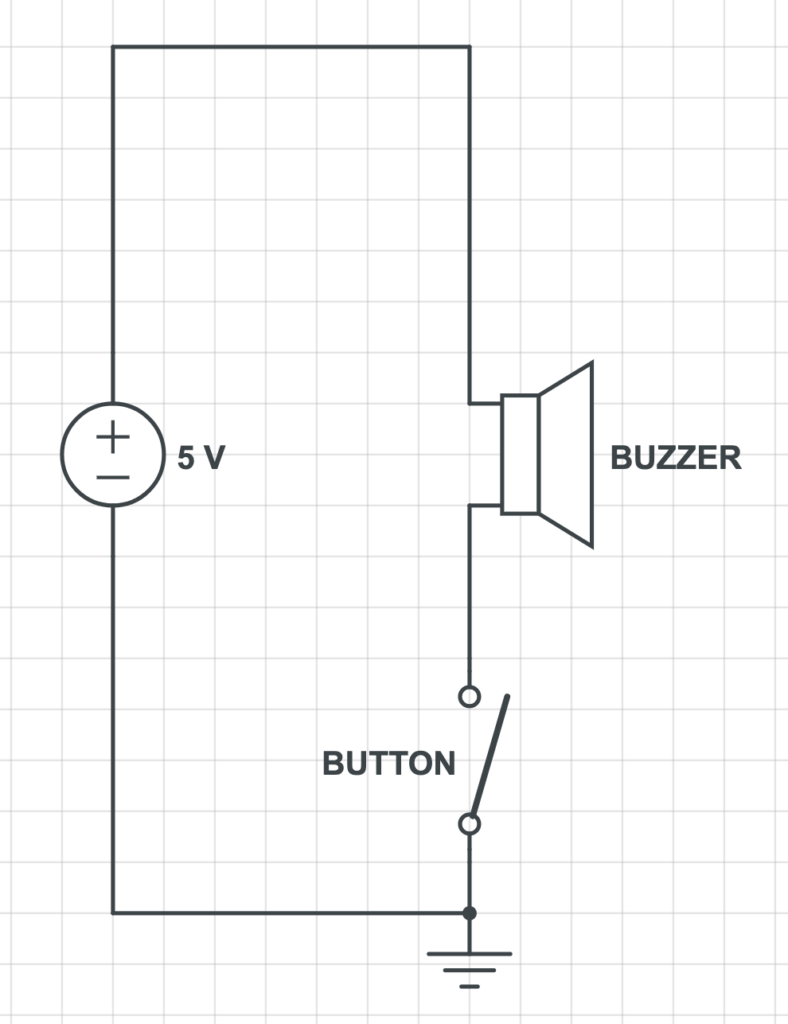
Remember to document the circuit you have built in Step 1, and continue building with the following diagram:
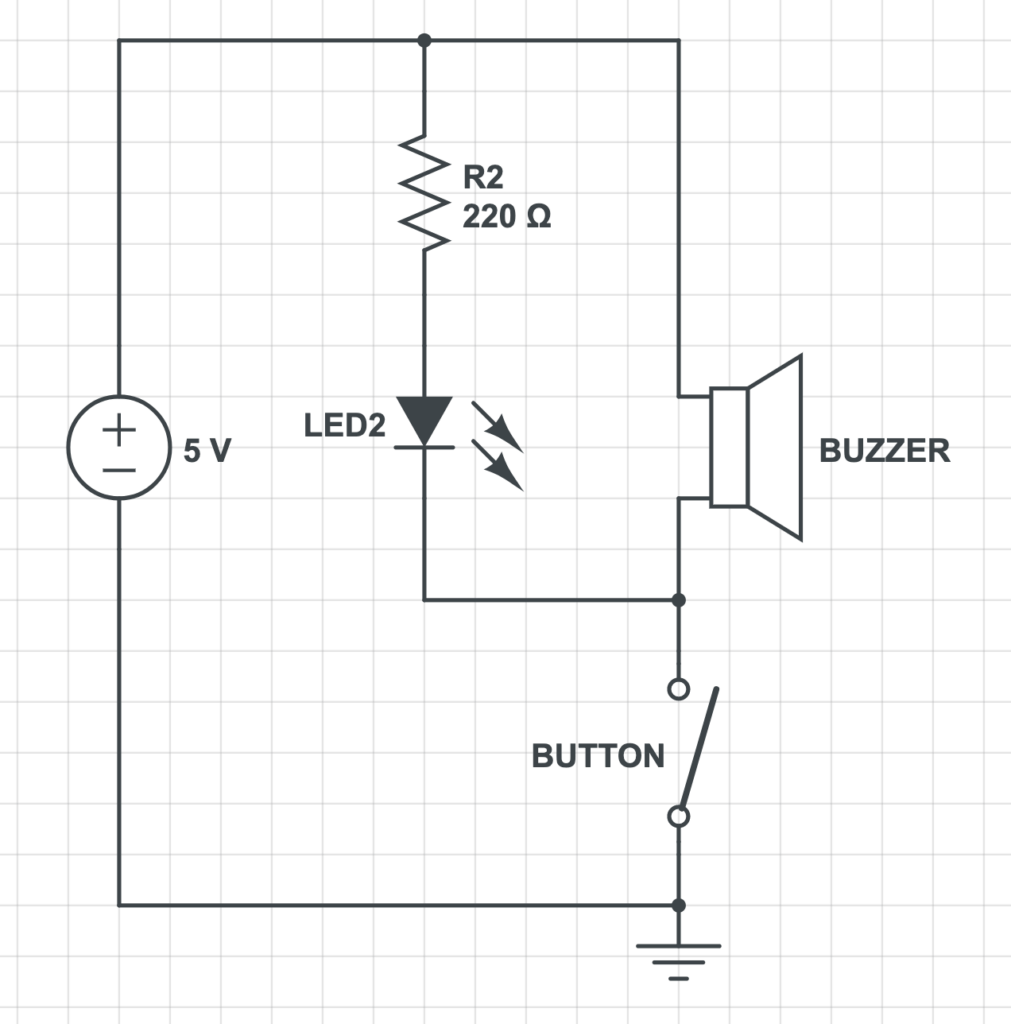
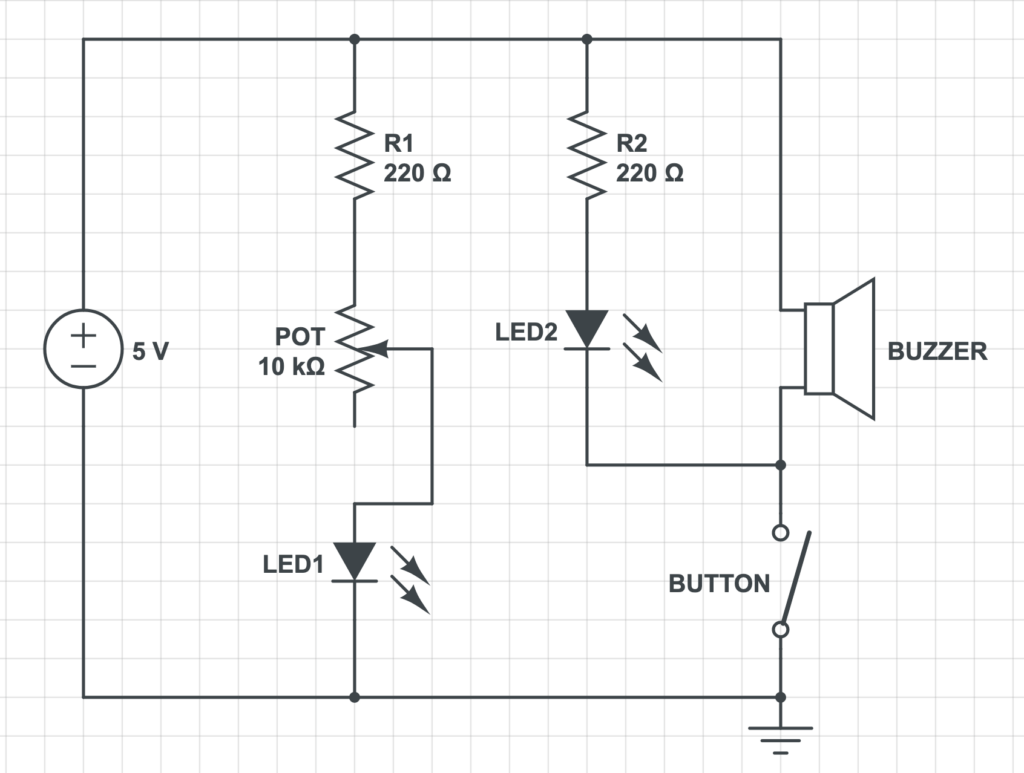
Individually, use cardboard, copper tape, and wires to build a switch. You will be brought to soldering stations to complete this task. There, each of you will make one DIY paddle with long wires and copper tape that you will combine into a cardboard switch.
Once you have completed the DIY paddle switch, replace the push button with the newly soldered DIY paddle.
Using the morse code* chart below, choose a 4-letter secret word and send it to another team on the table next to you. Take advantage of the paddle’s switch long wires and don’t let them hear your secret word! In turns, you will need to decode each other’s secret word to succeed.
* Morse code is a method used in telecommunications to encode text characters as standardized sequences of two different signal durations, called dots and dashes, or dots (1 unit of time) and dash (3 units of time).
* Morse code is a method used in telecommunications to encode text characters as standardized sequences of two different signal durations, called dots and dashes, or dots (1 unit of time) and dash (3 units of time).
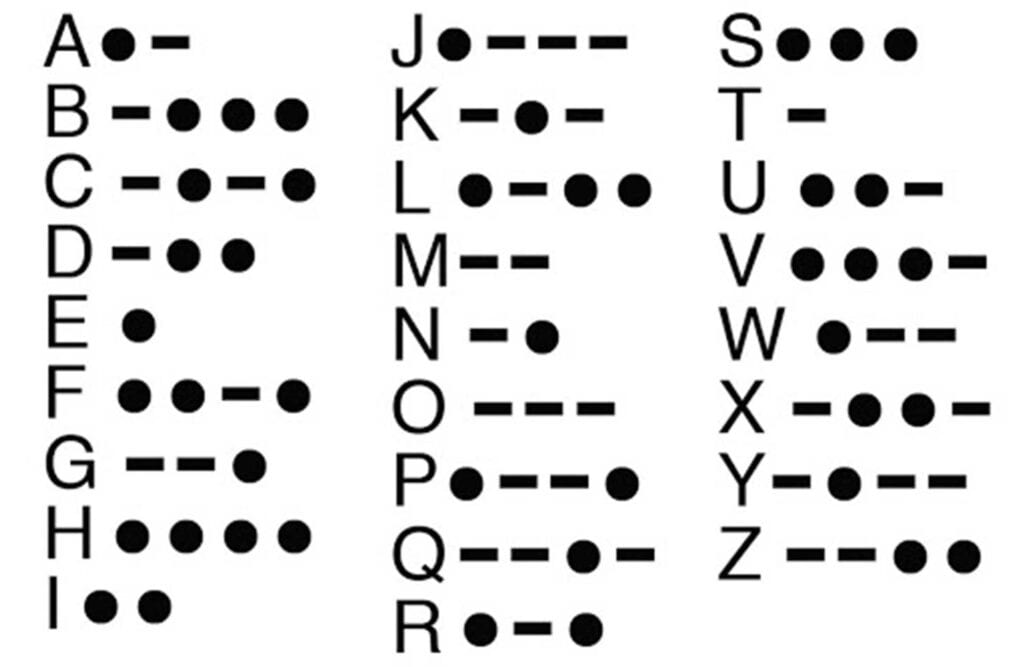
For your documentation, create a blog post that includes the following items based on your experience in this recitation. Include all of these elements in your documentation:
For each of the three steps in Task 1:
For Task 2:
For Task 3:
Additional Required Questions: Take time to reflect on this week’s readings and the recitation exercise to answer these questions:
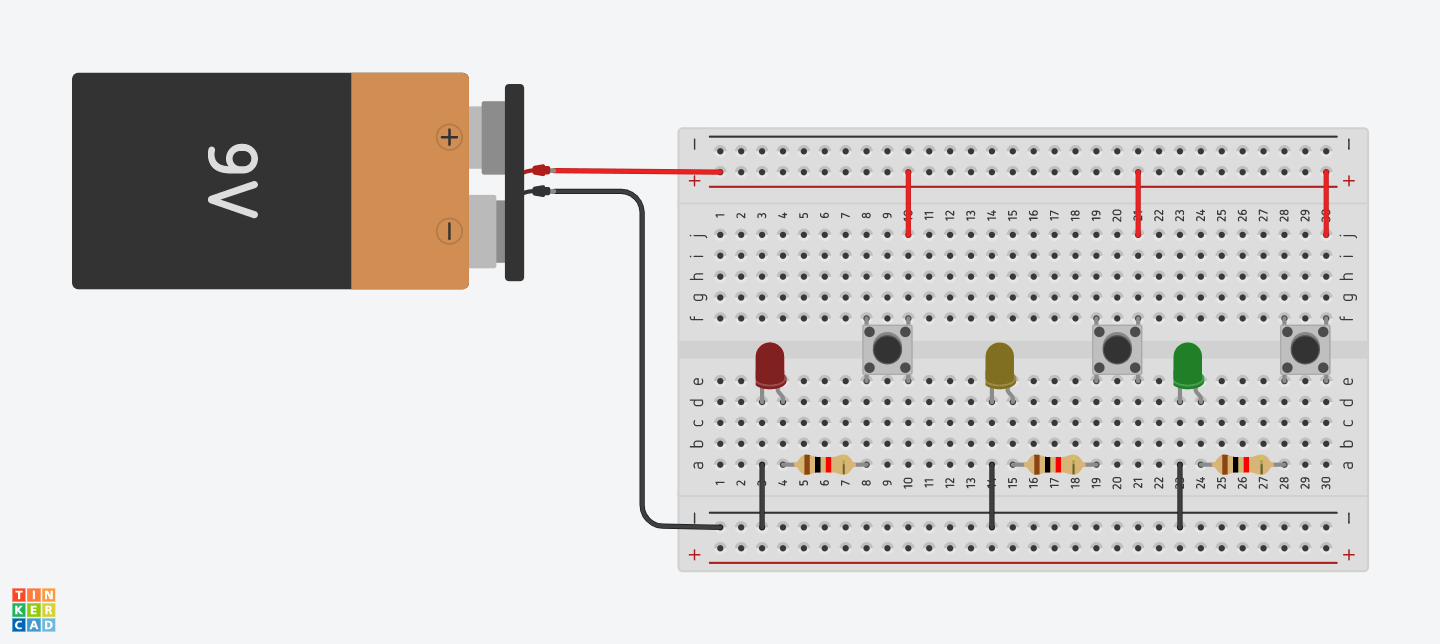
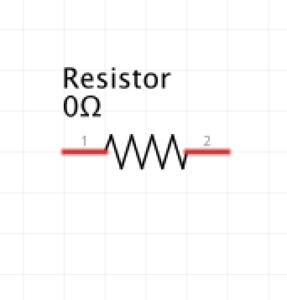
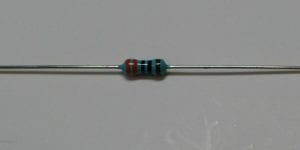
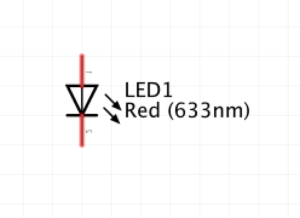
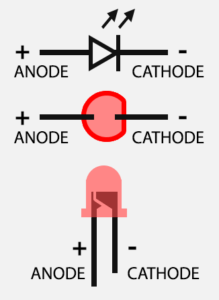
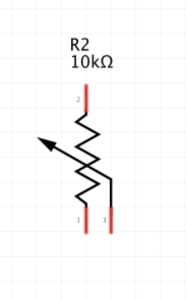
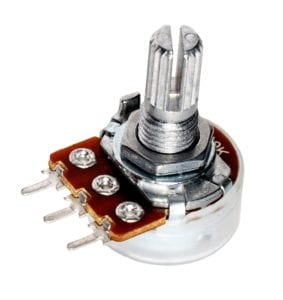
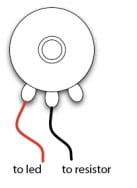
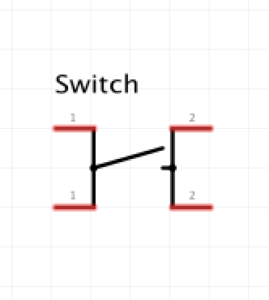

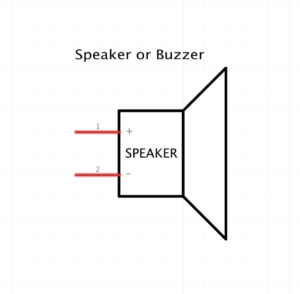
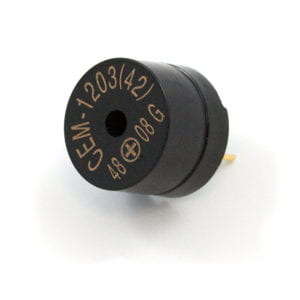
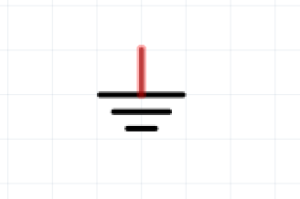
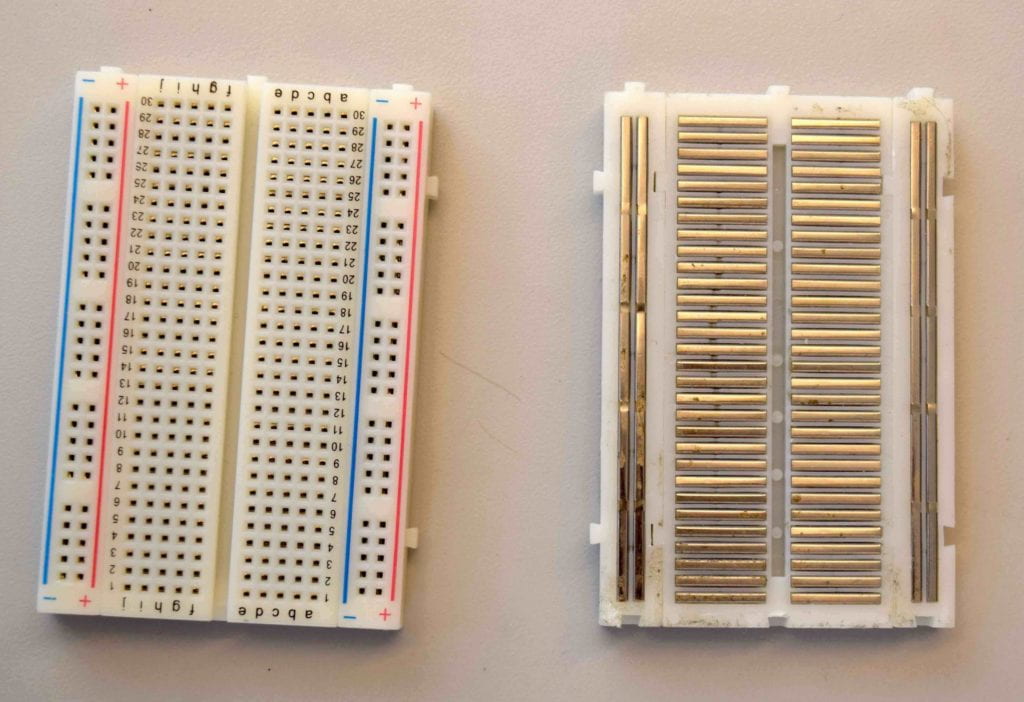
The breadboard has wires inside of it. You can read more about it in the article Making prototype circuits using a solderless breadboard. You can see the pattern if you remove the adhesive paper from the back of the breadboard. But don’t remove it completely – The wires might fall out!